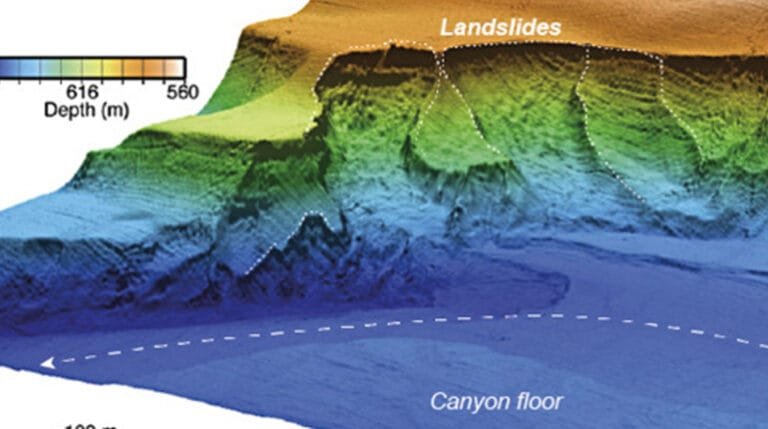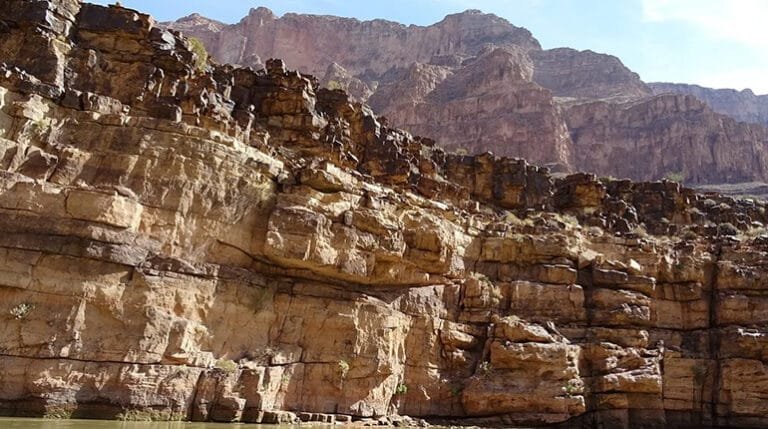Geological Anomalies and the Flood Hypothesis

The story of Noah’s Flood, as documented in the Bible, has long been a subject of intrigue, debate, and sometimes skepticism. For those who accept the biblical account as a historical and theological truth, the implications are far-reaching, particularly in understanding Earth’s geological history. The account of a global deluge offers a compelling framework for interpreting a variety of geological anomalies that can be observed across the planet. In this article, we will explore how these anomalies can be understood within the context of a young Earth and the Flood hypothesis, asserting that they provide evidence corroborating the biblical narrative.
The idea that the Earth is approximately 6,000 years old and that a significant catastrophe, such as the Flood, shaped its geological features is gaining interest among students of biblical apologetics. In a world where naturalistic explanations for geological formations dominate scientific discourse, re-evaluating these occurrences through a biblical lens offers an alternative paradigm for understanding our planet’s past. By investigating fossils, sediment layers, and geographical formations, we can uncover how they align with the idea of a worldwide flood as depicted in the Scriptures. This exploration aims to educate and empower those who seek to understand creation from a biblical perspective grounded in faith and scientific inquiry.
Understanding Geological Anomalies
Geological anomalies are curiosities in Earth’s physical landscape, including formations, fossils, and stratified layers that appear out of the ordinary when viewed from conventional perspectives. Such anomalies are often the key to unlocking insights into Earth’s history, and when viewed through a biblical framework, they can affirm the Flood narrative. Many geological formations can be logically interpreted as products of cataclysmic events rather than slow, gradual processes, thereby supporting a young Earth viewpoint.
Some of the most compelling geological anomalies that can be tied to the Flood hypothesis include sedimentary rock formations, fossil deposits, and polystrate fossils. Each of these phenomena offers unique insights into how a global catastrophic flood could have influenced the Earth’s geology.
Sedimentary Rock Layers
One of the most striking geological features supporting the Flood hypothesis is the presence of vast sedimentary rock layers. These layers cover significant portions of the Earth’s surface and present various characteristics that suggest they formed rapidly rather than over millions of years. When observing sedimentary rock in a typical cliff face or canyon, one sees distinct layers, often rich in fossils. The Flood hypothesis posits that these layers could have been laid down during the tumultuous period of the deluge.
- Rapid Deposition: Evidence suggests that floodwaters can transport and deposit vast quantities of sediment quickly, especially in the chaotic environment of a global flood. The sheer volume of materials transported and deposited in a short time frame could account for the extensive sedimentary layers we observe.
- Fossil Distribution: The fossil record within these layers often shows a mixture of marine and terrestrial life, indicating a catastrophic event that brought these organisms together. This aligns with the conclusion of a global flood where diverse species would have been displaced and entombed rapidly.
- Uniformity Across Vast Areas: The presence of similar sedimentary formations across continents suggests a worldwide event rather than localized flooding. This uniformity can be interpreted as evidence of a single catastrophic event, supporting the Flood narrative.
Fossil Deposits
The fossil record itself offers compelling arguments for the Flood hypothesis. Fossils are typically found in sedimentary rock layers, which as noted earlier, suggest rapid deposition. Many fossils appear in mass graveyards where organisms are exceptionally well-preserved. Such preservation indicates that they were buried quickly, which is consistent with the idea of a global flood.
- Polystrate Fossils: These are fossils of trees or other organisms that extend through multiple layers of sedimentary rock. Their existence challenges the conventional view that each layer represents a significant period of time. Instead, their rapid burial during a catastrophic event, like a flood, makes far more sense from a biblical perspective.
- Marine Fossils on Land: The presence of marine fossils at high altitudes and in terrestrial regions also supports the concept of a global flood. Such findings indicate that ocean coverage was once much broader, consistent with the biblical description of the flood’s waters covering all the earth.
- Mass Extinction Layers: Some layers within the sedimentary rock record suggest rapid and extensive die-off events. These markers align with the idea of mass extinctions resulting from global flooding, as described in the account of Noah’s Flood.
Geological Formations
Beyond sedimentary layers and fossils, the configuration of various landforms also raises questions that can be answered through the Flood hypothesis. Features such as canyons, valleys, and deltas appear to have been shaped by powerful forces of water, pointing to rapid erosion and sediment displacement rather than prolonged geological processes.
- Grand Canyon: The Grand Canyon, often cited as a slow-formed geological feature, can alternatively be seen as an example of catastrophic erosion caused by massive floodwaters. The sheer scale and sudden nature of this erosion would be logical within the Flood framework.
- River Deltas: The formation of deltas typically reflects sediment deposition by water. If the global flood hypothesis is taken into account, the rapid flow of floodwaters could explain the creation of extensive delta systems.
- Layered Mountain Ranges: Some mountain ranges display layering that seems inconsistent with the prevailing slow processes of uplift and erosion. Instead, these formations could represent complex interactions during and after a flood event.
Interpreting Evidence through a Biblical Lens
The key to interpreting these geological anomalies lies in understanding the biblical narrative as foundational to Earth’s history. For many who accept a young Earth viewpoint, Scriptures provide a coherent account of creation, fall, and subsequent restoration through divine intervention. This understanding informs all aspects of interpreting scientific data and geological formations.
Integrating faith with scientific inquiry does not preclude one from rigorous analysis; rather, it enhances the exploration of evidence in alignment with biblical teachings. This perspective emphasizes the significance of God’s actions as not merely isolated events but as part of a divine plan that continues to unfold through history.
Rejecting Naturalistic Explanations
Many conventional geological theories rely on slow and gradual processes that span millions of years, sometimes known as uniformitarianism. However, from a biblical apologetics perspective, these theories can be challenged as insufficient for explaining the intricate detail and rapidity of the geological record. Instead, a cataclysmic view of history aligns more congruently with the biblical narrative surrounding Noah’s Flood.
While some scientists may see certain features as results of decades or centuries of natural processes, biblical adherents argue that a single, significant event could explain variations and complexities. This approach calls for a reevaluation of how scientific evidence is interpreted, putting the biblical account of catastrophic events at the forefront of geological history.
Conclusion
The exploration of geological anomalies from a young Earth perspective provides a fascinating avenue for understanding the implications of Noah’s Flood in the context of Earth’s formation and history. By examining sedimentary rock layers, fossil deposits, and geological formations, we see a compelling case for a worldwide flood as described in the Bible. These geological features not only challenge prevailing naturalistic paradigms but also affirm the scriptural narrative, providing a coherent framework for understanding Earth’s past.
In navigating this interaction between faith and science, individuals can find confidence in the belief that the geological record is not just a product of random, gradual processes but can also be seen as a testament to divine action and historical events as described in Scripture. Ultimately, appreciating these anomalies within the Flood hypothesis contributes significantly to a comprehensive understanding of creation, disaster, and restoration as outlined in the biblical narrative.





